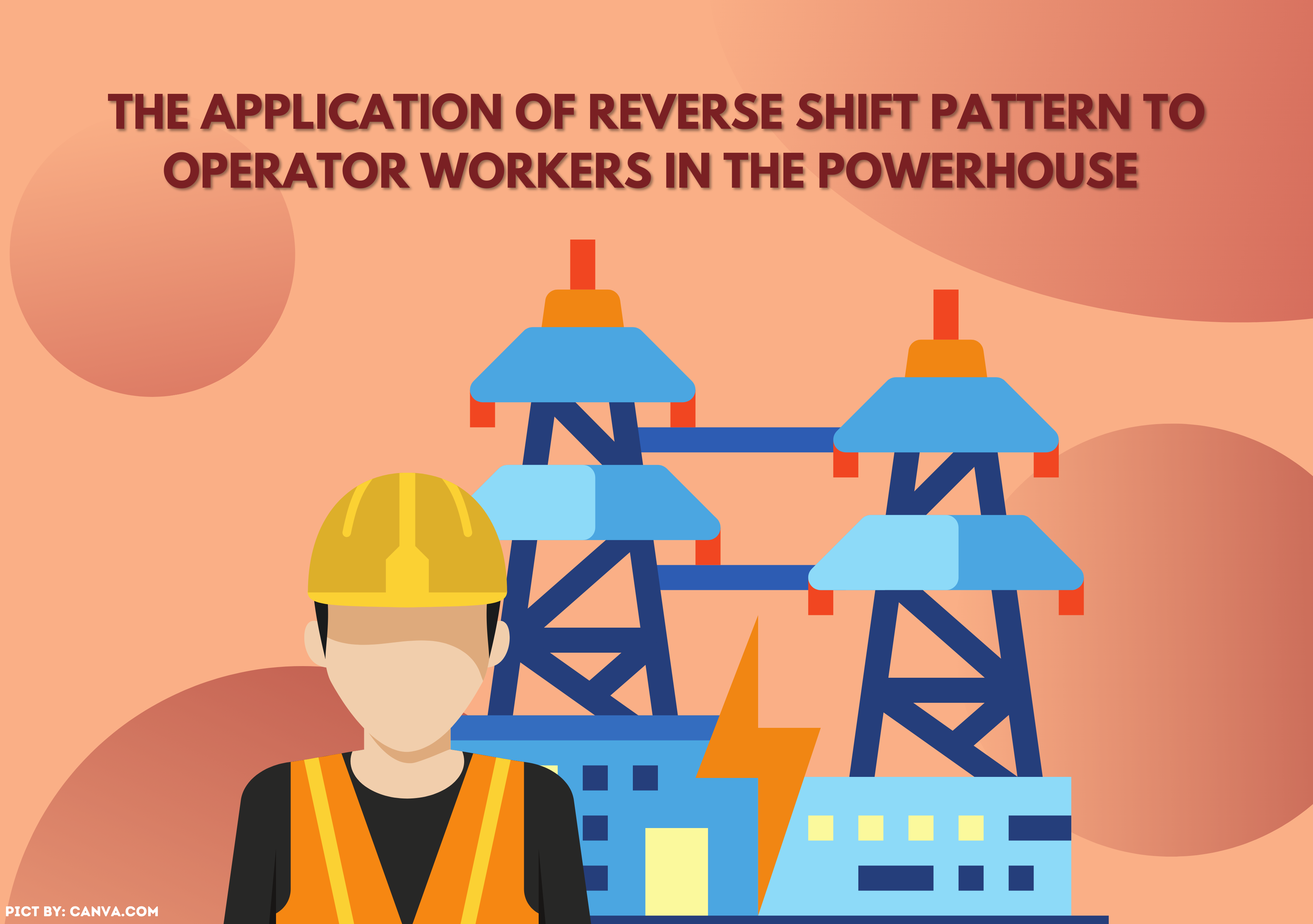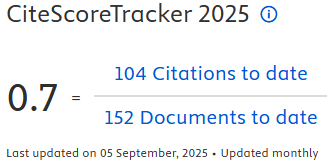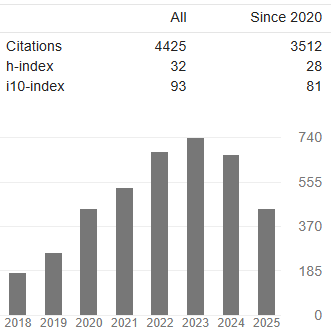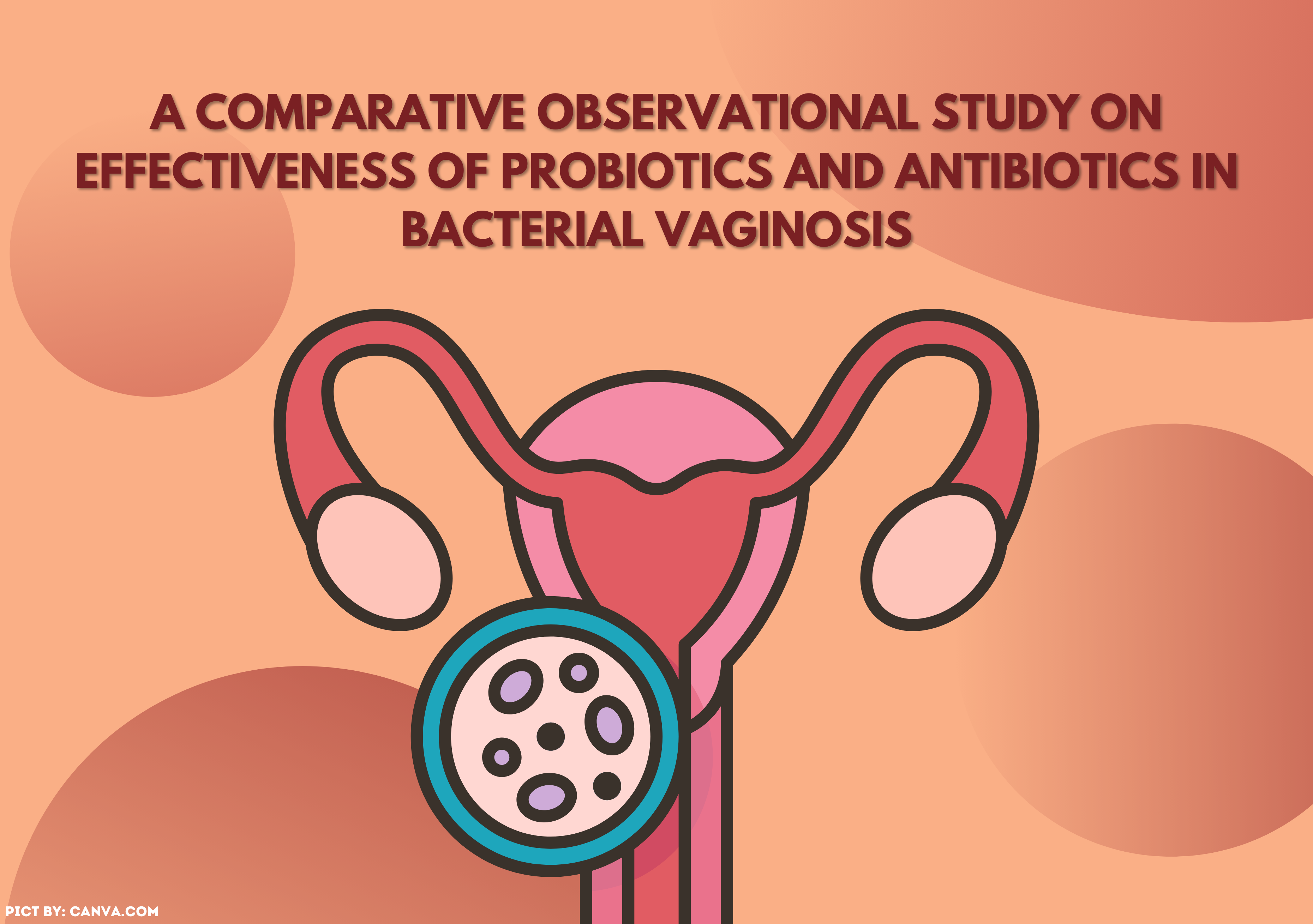THE APPLICATION OF REVERSE SHIFT PATTERN TO OPERATOR WORKERS IN THE POWERHOUSE

Introduction: Companies generally apply a shift system to keep production running. Implementing work shifts is not necessarily independent of the risks, especially for workers who carry it out. Aims: to analyze the impact felt by operator workers from the implementation of the shift work system that is currently being undertaken, in terms of its impact on physiological, performance, psychological, and social aspects. Method: This research used a qualitative approach. The research was conducted at the powerhouse and the informants in this study were management and employees of the powerhouse operator. Collecting the required data was done by interviewing and observation techniques. Meanwhile, the discussion used descriptive method. Result: The results showed that the backward shift pattern applied by the company did not have a break. It is known that there are several impacts felt by workers as a result of implementing backward work shifts, such as disturbed sleep patterns, experiencing digestive disorders such as bloating and diarrhea, feeling excessively depressed, and workers experiencing social interaction barriers outside of work. However, the shift pattern currently applied has no impact on the performance of the operator. Conclusion: The shift pattern implemented has an impact on operator workers, especially on physiological, psychological and social aspects. Therefore, there is still a need for improvement in the shift pattern applied.
Adi, D.P.G.S., Suwondo, A. and Lestyanto, D., 2013. Hubungan Antara Iklim Kerja, Asupan Gizi Sebelum Bekerja dan Beban Kerja terhadap Tingkat kelelahan Kerja pada Pekerja Shift Pagi Bagian Packing PT. X Kabupaten Kendal. Jurnal Kesehatan Masyarakat, 2(2), pp.1–11.
Ahsan, H.H., 2016. Stres Kerja Shift Malam dan Kinerja. Jppni, 01(02), pp.93–100.
Anggraini. S, N., Wijono, T.H. and Handoyo, 2015. Pengaruh Bekerja dengan Shift Terhadap Faktor Fisiologis Pekerja Pabrik Triplek PT. Admira di Desa Bibis Kecamatan Sukomoro Kabupaten Magetan Tahun 2015. GEMA KESEHATAN LINGKUNGAN, 13(3), pp.149–152. https://doi.org/10.36568/kesling.v13i3.104
Arifah, D.A., Andarini, Y.D. and Dianita, R., 2019. Occupational Fatigue Based on Work Shift Among Medical Workers at Dr Harjono Hospital. Jurnal Ilmu Kesehatan Masyarakat, 10(November), pp.199–206. https://doi.org/10.26553/jikm.2019.10.3.199-206
Bazrafshan, M., Rahimpoor, R., Moravveji, F., Soleymaninejad, N., Kavi, E., Sookhak, F. and Zolghadr, R., 2019. Prevalence and Effects of Sleep Disorders Among Shift Work Nurses Archive of SID. Jundishapur Journal of Chronic Disease Care, 8(1), pp.1–8. https://doi.org/10.5812/jjcdc.81185
Berger, A.M. and Hobbs, B.B., 2005. Impact of Shift Work on the Health and Safety of Nurses and Patients. Clinical Journal of Oncology Nursing, 10(4), pp.465–472. https://doi.org/10.1188/06.CJON.465-471
Briançon-Marjollet, A., Weiszenstein, M., Henri, M., Thomas, A., Godin-Ribuot, D. and Polak, J., 2015. The impact of sleep disorders on glucose metabolism: Endocrine and molecular mechanisms. Diabetology and Metabolic Syndrome, 7(1), pp.1–16. https://doi.org/10.1186/s13098-015-0018-3
Burman, D., 2017. Sleep Disorders: Circadian Rhythm Sleep-Wake Disorders. FP Essentials, 460, pp.33–36.
Cannizzaro, E., Cirrincione, L., Mazzucco, W., Scorciapino, A., Catalano, C., Ramaci, T., Ledda, C. and Plescia, F., 2020. Night-time shift work and related stress responses: A study on security guards. International Journal of Environmental Research and Public Health, 17(2), p.562. https://doi.org/10.3390/ijerph17020562
Cho, J.W. and Duffy, J.F., 2019. Sleep, sleep disorders, and sexual dysfunction. World Journal of Men's Health, 37(3), pp.261–275. https://doi.org/10.5534/wjmh.180045
De Cordova, P.B., Bradford, M.A. and Stone, P.W., 2016. Increased errors and decreased performance at night: A systematic review of the evidence concerning shift work and quality. Work, 53(4), pp.825–834. https://doi.org/10.3233/WOR-162250
Costa, G., 2010. Shift Work and Health: Current Problems and Preventive Actions. Safety and Health at Work, 1(2), pp.112–123. https://doi.org/10.5491/SHAW.2010.1.2.112
Dall'Ora, C., Ball, J., Recio-Saucedo, A. and Griffiths, P., 2016. Characteristics of shift work and their impact on employee performance and wellbeing: A literature review. International Journal of Nursing Studies, 57, pp.12–27. https://doi.org/10.1016/j.ijnurstu.2016.01.007
Decree of the Minister of Manpower and Transmigration of the Republic of Indonesia Number: Kep.234/MEN/2003.
Drake, C.L. and Wright, K.P., 2010. Shift Work, Shift-Work Disorder, and Jet Lag. In: M.H. Kryger, T. Roth and W.C. Dement, eds. Principles and Practice of Sleep Medicine: Fifth Edition, 5th edn. Elsevier Inc.pp.784–798. https://doi.org/10.1016/B978-1-4160-6645-3.00071-2
Edell Gustafsson, U.M., 2002. Sleep quality and responses to insufficient sleep in women on different work shifts. Jurnal of Clinical Nursing, 11, pp.280–288. https://doi.org/10.1046/j.1365-2702.2002.00574.x
Firmana, A. and Hariyono, W., 2011. Hubungan Shift Kerja dengan Stres Kerja pada Karyawan Bagian Operation PT. Newmont Nusa Tenggara di Kabupaten Sumbawa Barat. KES MAS: Jurnal Fakultas Kesehatan Masyarakat, 5(1), pp.45–48. https://doi.org/10.12928/kesmas.v5i1.1086
Firmansyah, A., Saleh, A., Kadar Bagian, K.S. and Keperawatan, I., 2014. Relationship Between Nurse Work Shift and the Performance of Nursing Care Documenting in Regional Public Hospital of Polewali Mandar.
Garbarino, S., Carli, F. De, Nobili, L., Mascialino, B., Squarcia, S., Penco, M.A., Beelke, M. and Ferrillo, F., 2002. Sleepiness and Sleep Disorders in Shift Workers : A Study on a Group of Italian Police Officers. SLEEP, 25(6), pp.642–647.
Gibson, M., 2021. A systematic review of the relationship between night shift work and oxidative stress. Chronobiology International, pp.1–14. https://doi.org/10.1080/07420528.2021.1989446
Ihsan, T., Rachmatiah, I., Salami, S. and Info, A., 2020. Fatigue in ShiÅ¿t Work on Stamping Division Workers of PT. Toyota Motor Manufacturing Indonesia. KEMAS, 15(3), pp.316–323. https://doi.org/10.15294/kemas.v15i3.20854
Juliana, M., Camelia, A. and Rahmiwati, A., 2018. Analisis Faktor Risiko Kelelahan Kerja Pada Karyawan Bagian Produksi PT. Arwana Keramik, Tbk. Jurnal Ilmu Kesehatan Masyarakat, 9(1), pp.53–63. https://doi.org/10.26553/jikm.2018.9.1.53-63
Kecklund, G. and Axelsson, J., 2016. Health consequences of shift work and insufficient sleep. BMJ (Online), 355, pp.1–13. https://doi.org/10.1136/bmj.i5210
Kim, S., Park, Y. and Niu, Q., 2017. Micro-break activities at work to recover from daily work demands. Journal of Organizational Behavior, 38(1), pp.28–44. https://doi.org/10.1002/job.2109
Lin, P.C., Chen, C.H., Pan, S.M., Chen, Y.M., Pan, C.H., Hung, H.C. and Wu, M.T., 2015. The association between rotating shift work and increased occupational stress in nurses. Journal of Occupational Health, 57(4), pp.307–315. https://doi.org/10.1539/joh.13-0284-OA
Marchelia, V., 2014. Stres Kerja Ditinjau Dari Shift Kerja Pada Karyawan. Jurnal Ilmiah Psikologi Terapan, 02(01), pp.130–143. doi: https://doi.org/10.22219/jipt.v2i1.1775
Maurits, L.S. and Widodo, I.D., 2008. Faktor dan Penjadualan Shift Kerja. Teknoin, 13(1), pp.18–22. https://doi.org/10.20885/teknoin.vol13.iss2.art4
Maurits, L.S.K., 2010. Selintas Tentang Kelelahan Kerja. Yogyakarta: Amara Books.
Nea, F.M., Pourshahidi, L.K., Kearney, J., Livingstone, M.B.E., Bassul, C. and Corish, C.A., 2017. Qualitative Exploration of the Shift Work. JOEM, 59(12), pp.1153–1160. https://doi.org/10.1097/JOM.0000000000001126
Nurbaity, S., Rahmadi, H. and Fithriani, E.S., 2019. Shift Kerja Dan Stres Kerja Berdampak Terhadap Kinerja Karyawan. Administrasi Kantor, 7(2), pp.137–150.
Rouch, I., Wild, P., Ansiau, D. and Marquié, J., 2007. Shiftwork experience, age and cognitive performance Shiftwork experience, age and cognitive performance. Ergonomics, 48(10), pp.1282–1293. https://doi.org/10.1080/00140130500241670
Saftarina, F. andHasanah, L., 2014. Hubungan Shift Kerja dengan Gangguan Pola Tidur pada Perawat Instalasi Rawat Inap di RSUD Abdul Moeloek Bandar Lampung 2013. Medula Unila, 2(2), pp.28–38.
Saleh, L.M., Russeng, S.S. and Ishak, H., 2018. Tingkat Risiko Psikologis Karyawan ATC di Salah Satu Cabang Air NAV Indonesia. JURNAL MKMI, 14(4), pp.345–350. https://doi.org/10.30597/mkmi.v14i4.5206
Sari, V.S.I., Setyaningsih, Y. and Suroto, S., 2020. Hubungan Ritme Circadian dan Kebisingan terhadap Fatigue pada Pekerja PT APAC Inti Corpora (Studi kasus dilaksanakan pada Unit Spinning 1 Bagian Ring Frame Sub.Bagian Doving). Media Kesehatan Masyarakat Indonesia, 19(2), pp.116–120. https://doi.org/10.14710/mkmi.19.2.116-120
Seguh, F., Kolibu, F.K. and Kawatu, P.A., 2019. Hubungan Shift Kerja dan Stres Kerja Dengan Kinerja Perawat di Rumah Sakit Bhayangkara Tingkat III Manado. Jurnal e-Biomedik (eBM), 7(2), pp.118–124. doi: https://doi.org/10.35790/ebm.v7i2.24753
Singh, K. and Muninarayanappa, P.D.N. V., 2018. Psychological Distress Among Staff Nurses Working in Night Shifts. International Education and Research Journal, 4(4), pp.225–227.
Supomo, T.M., 2014. Shift Kerja Terhadap Kinerja Pegawai Satuan Polisi Pamong Praja Kota Tarakan. Jurnal Ilmiah Psikologi Terapan, 02(01), pp.75–88. doi: https://doi.org/10.22219/jipt.v2i1.1771
Syafar, S. and Fiatno, A., 2018. Pengaruh Shift Kerja terhadap Kelelahan Pekerja Pabrik Sawit di PTPN V Sei Galuh. Jurnal Teknik Industri Terintegrasi (JUTIN), 1(2), pp.88–97. https://doi.org/10.31004/jutin.v1i2.323
Syifa, K., Rachman, F., Disrinama, M., Perkapalan, P. and Surabaya, N., 2017. Analisis Pengaruh Faktor Risiko terhadap Gangguan Pencernaan (Pekerja Industri Pestisida Gresik). Proceeding 1st Conference on Safety Engineering and Its Application, 1(1), pp.235–240.
Copyright (c) 2023 The Indonesian Journal of Public Health

This work is licensed under a Creative Commons Attribution-NonCommercial-ShareAlike 4.0 International License.
- The authors agree to transfer the transfer copyright of the article to The Indonesian Journal of Public Health effective if and when the paper is accepted for publication.
- Authors and other parties are bound to the Creative Commons Attribution-NonCommercial-ShareAlike 4.0 International License for the published articles, legal formal aspect of journal publication accessibility refers to Creative Commons Attribution-NonCommercial-ShareAlike 4.0 International License (CC BY-NC-SA), implies that:
- Attribution ” You must give appropriate credit, provide a link to the license, and indicate if changes were made. You may do so in any reasonable manner, but not in any way that suggests the licensor endorses you or your use.
- NonCommercial ” You may not use the material for commercial purposes.
- ShareAlike ” If you remix, transform, or build upon the material, you must distribute your contributions under the same license as the original.































